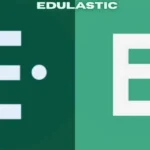Scoliosis is a sideways curvature of the spine into either a C-shape or an S-shape. It can occur at any age but most often affects children and adolescents. Sometimes an abnormality during pregnancy can cause scoliosis at birth. Multiple sclerosis, cerebral palsy, and other neuromuscular disorders can cause scoliosis. However, most cases of scoliosis are idiopathic, meaning that there is no identifiable cause. If you or your child has scoliosis, you may be wondering, “Should I start looking for physical therapy near me?”
Aligning the Spine: Scoliosis Solutions Explored
When scoliosis is mild to moderate, the first option for treatment may be bracing. A brace is a rigid structure that fits around the back to help prevent the curvature from getting worse, especially in children who are still growing. The brace can also help reduce the curvature and relieve pain by taking stress off the muscles in the back.
When scoliosis is severe, sometimes the only option is surgery. Spinal fusion surgery can help prevent progression of the curvature and straighten the spine by fusing two or more vertebrae together.
Physical therapy Carrboro has a role in treating scoliosis, either alone or in combination with other treatment options. Physical therapy is typically part of the rehabilitation process after surgery, including a spinal fusion. It can also help to strengthen the muscles of the back and make the spine more flexible, which may help a brace to work more efficiently.
Scoliosis Support: PT’s Impact on Alignment
There are several physical therapy approaches to treating scoliosis. One is the Schroth method, which was developed in the late 19th and early 20th centuries by Katharina Schroth, a German woman who had severe scoliosis that didn’t respond to bracing.
There are three components to the Schroth method:
- Postural awareness
- Rotational angular breathing
- Muscular symmetry
Postural awareness involves becoming aware of what your spine looks like at baseline and positions that make the angulation worse. Rotational angular breathing involves reshaping the ribcage by rotating the spine with breath. Muscular symmetry involves strengthening weakened muscles in your back while reshaping those that have become overly prominent through overwork.
Even if you don’t use the Schroth method, there are more general ways that a physical therapy clinic can help with scoliosis. Treatment may start with modalities to relieve pain, such as ultrasound or electrical stimulation. Physical therapists may use manual therapy to guide the muscles of the back into a better position using their hands.
Curvature of the spine can restrict range of motion of the back. A physical therapist can teach exercises that lead to better flexibility. Physical therapy can retrain the body to function more efficiently, making it easier for you or your child to participate in activities of daily living.
Scoliosis can cause muscles to become weak. In addition to the muscles of the spine, the feet, hips, and shoulders can weaken. A physical therapy program for scoliosis involves assessing which areas are weak and developing an exercise program to strengthen them. With physical therapy, either alone or in combination with bracing, it may be possible to avoid surgery for scoliosis. Ask your doctor for a referral for you or your child.







